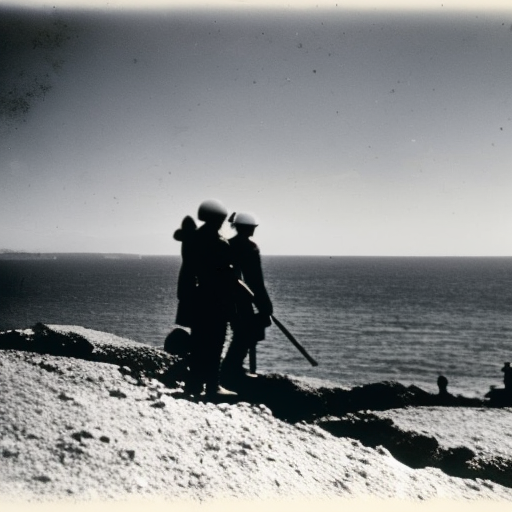Gallipoli Campaign: A Failed Allied Offensive in World War I
The Gallipoli Campaign was a major military operation during World War I that took place on the Gallipoli Peninsula in the Ottoman Empire (modern-day Turkey) from April 1915 to January 1916. The campaign was a joint offensive by the British Empire and France with the aim of capturing Constantinople (now Istanbul) and securing a sea route to Russia. However, the campaign ended in failure and heavy casualties for the Allies.
Background
At the outbreak of World War I in 1914, the Ottoman Empire joined the Central Powers, which included Germany and Austria-Hungary. The Allies, led by Britain, sought to open a new front against the Central Powers by attacking the Ottoman Empire. They believed that capturing Constantinople would not only weaken the Central Powers but also provide a direct supply route to Russia, which was struggling on the Eastern Front.
The Plan
The Allies devised a plan to attack the Gallipoli Peninsula, which guarded the Dardanelles Strait, a crucial waterway connecting the Aegean Sea to the Sea of Marmara and ultimately the Black Sea. The plan involved a naval assault followed by a land invasion. The British Royal Navy launched a series of unsuccessful naval attacks on Ottoman fortifications along the strait in February and March 1915.
The Land Invasion
In April 1915, British and French troops, along with troops from Australia and New Zealand known as the ANZACs (Australian and New Zealand Army Corps), landed on the Gallipoli Peninsula. The aim was to secure key positions and advance inland, but they encountered fierce resistance from well-entrenched Ottoman forces. The terrain was rugged and heavily defended, making progress difficult for the Allies.
The Stalemate
The campaign quickly turned into a stalemate, with both sides suffering heavy casualties. The ANZACs, in particular, faced significant challenges, including difficult terrain, inadequate supplies, and strong Ottoman defenses. Despite several attempts to break the deadlock, neither side was able to gain a decisive advantage.
The Evacuation
Realizing the futility of the campaign, the Allies decided to evacuate their forces from Gallipoli. In December 1915, a plan was put into action to withdraw the troops under the cover of darkness. The evacuation was a remarkable feat of military planning and execution, with the last Allied troops leaving the peninsula in January 1916. The Ottoman forces, however, were unaware of the evacuation until it was completed.
Legacy
The Gallipoli Campaign had a profound impact on the nations involved. The ANZACs, in particular, suffered heavy losses, with over 8,000 Australian and 2,700 New Zealand soldiers killed. The campaign became a symbol of national identity and sacrifice for both countries. The date of the initial landing, April 25th, is commemorated as ANZAC Day in Australia and New Zealand.
The campaign also had broader implications for the war. The failure to capture Constantinople and secure a supply route to Russia had significant consequences for the Allies. It prolonged the war on the Eastern Front and led to the resignation of several high-ranking British military officials. The campaign also boosted the morale of the Ottoman Empire and its allies, who saw it as a major victory against the Allies.
In conclusion, the Gallipoli Campaign was a failed Allied offensive during World War I. The aim of capturing Constantinople and securing a sea route to Russia was not achieved, and the campaign resulted in heavy casualties for the Allies. The ANZACs, in particular, suffered significant losses, and the campaign became a defining moment in the national identity of Australia and New Zealand. The failure of the campaign had broader implications for the war and boosted the morale of the Ottoman Empire and its allies.












